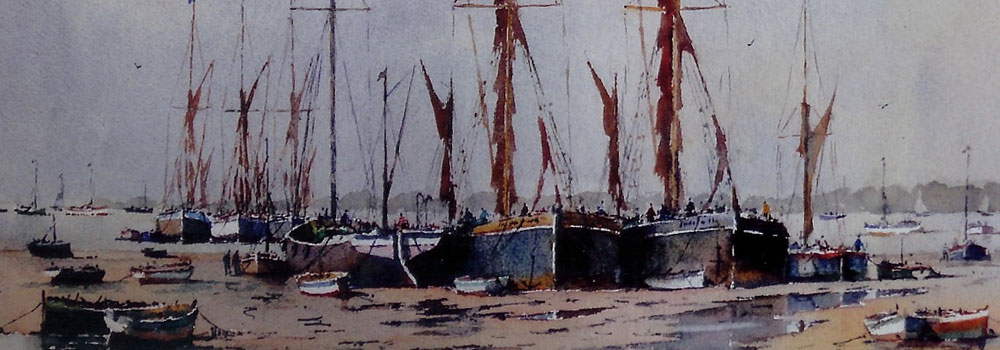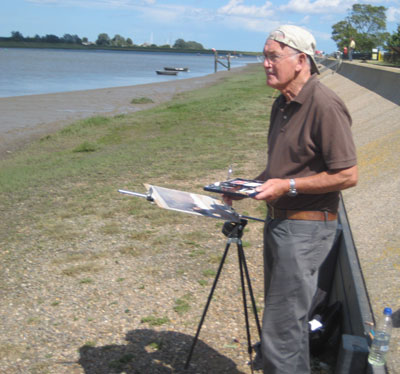 Sidney Cardew RSMA
Sidney Cardew RSMA
Sidney was born in London in 1931 and enjoyed drawing and painting while still at school. He embarked on a career in engineering and completed his national service in the Air Force. He started painting in earnest in his early thirties, attended evening classes run by an excellent teacher, and initially concentrated on oil painting. He was subsequently attracted to watercolours because the process of picture making was faster and its effects more instantaneous. He discovered and greatly admired the art of Edward Seago, whose techniques and choice of marine subject matter had a profound effect on him.
As regards Sidney’s painting methods, he used to paint on Bockingford paper but now prefers to use Saunders paper because he finds it holds washes a bit better. He does only a minimal amount of drawing at the outset, stating only the main block shapes, and then looks to develop the painting with a lot of wet-into-wet work. He adds figures last to animate his marine subjects. He prefers to work onsite but also finishes paintings in the studio. Unlike some artists, he rarely destroys a painting, preferring to explore its potential (through re-formatting) to develop into another more successful image. He considers himself essentially a tonal painter.
After attending sessions with the Wapping Group as a guest of Peter Gilman he was elected a full member in 1990, and in 1992 became a member of the Royal Society of Marine Artists. He includes among his strongest influences John Singer Sargent, William Russell Flint, Ted Wesson and Jack Merriott (both of whom he watched demonstrating their techniques), and Trevor Chamberlain who has been a valued mentor to him. He has exhibited with the RI and with the RBA, and has work in a number of provincial galleries.
His ambitions are to improve as a painter, to try oil paints again, and to tackle large watercolours more regularly. For twenty-five years he and his wife Eunice had to cope with severe brain damage to their late son Stephen, and they found that encouraging him to paint to a proficient standard (his work good enough to be accepted by the RSMA) offered him a powerful therapy and a valuable means of expression.
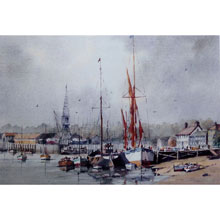 |
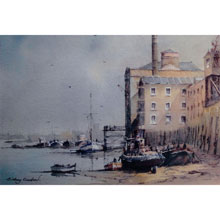 |
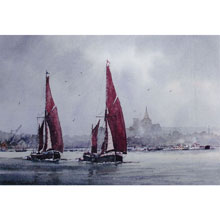 |
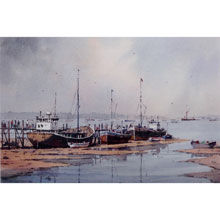 |

